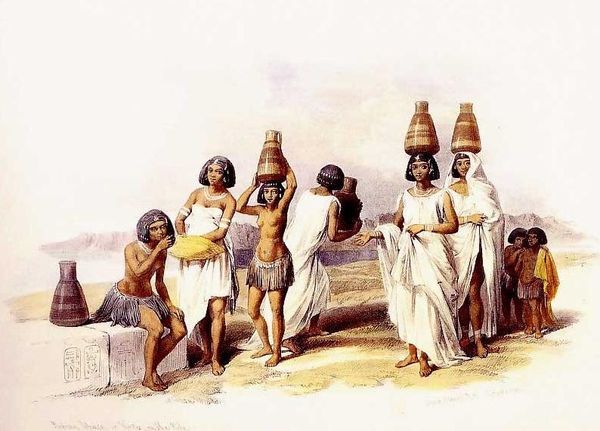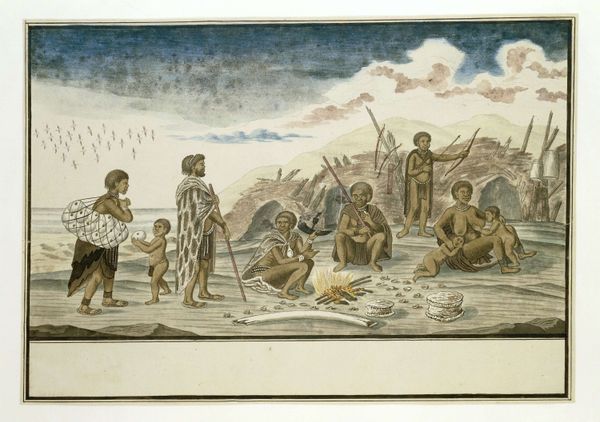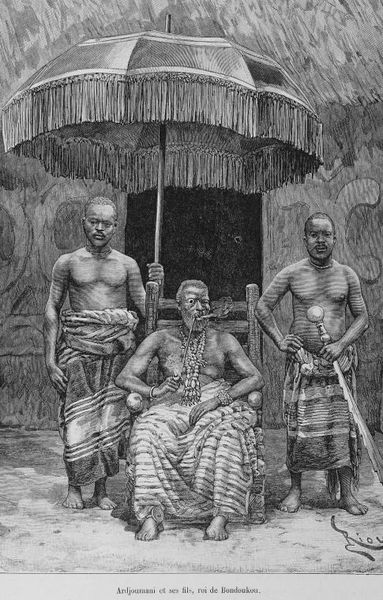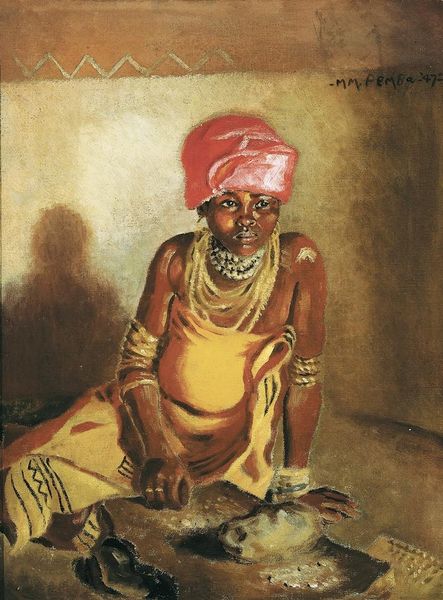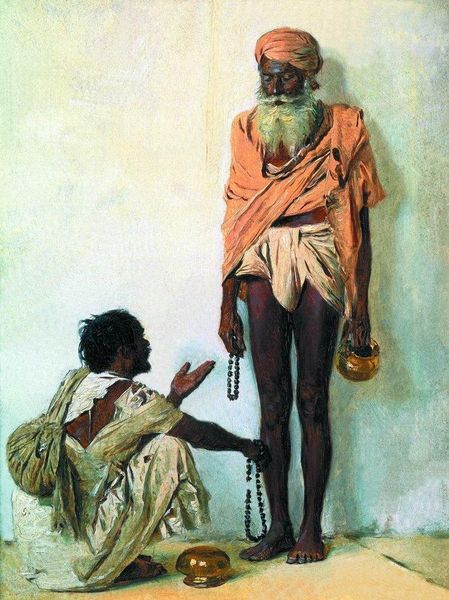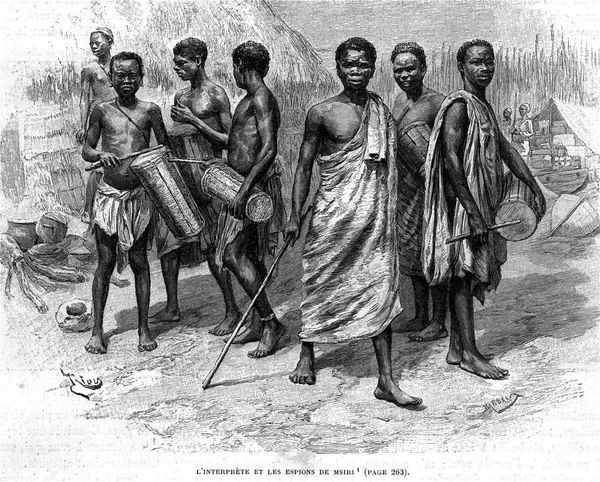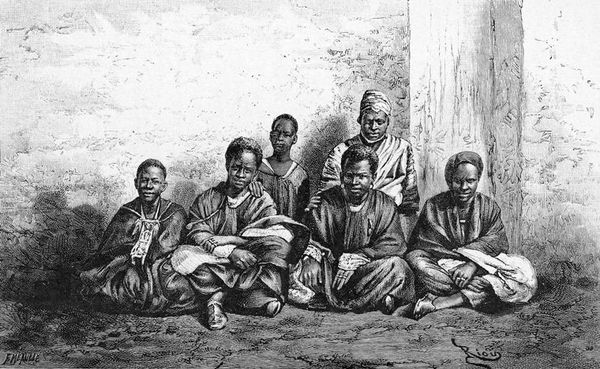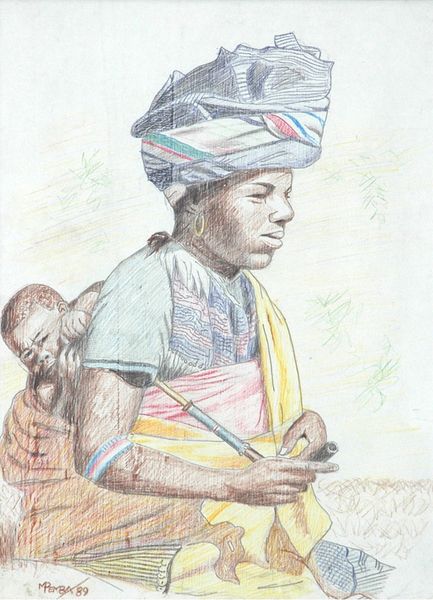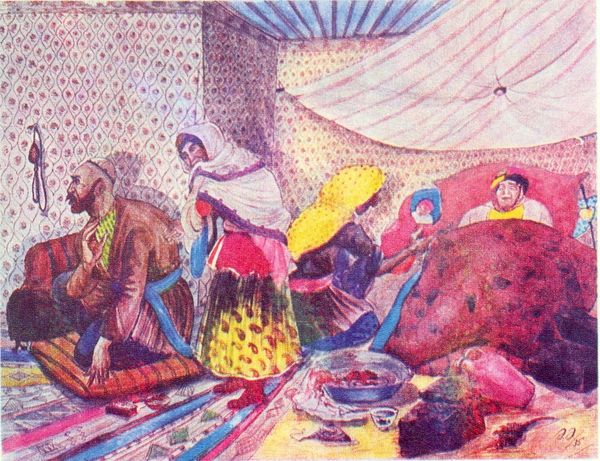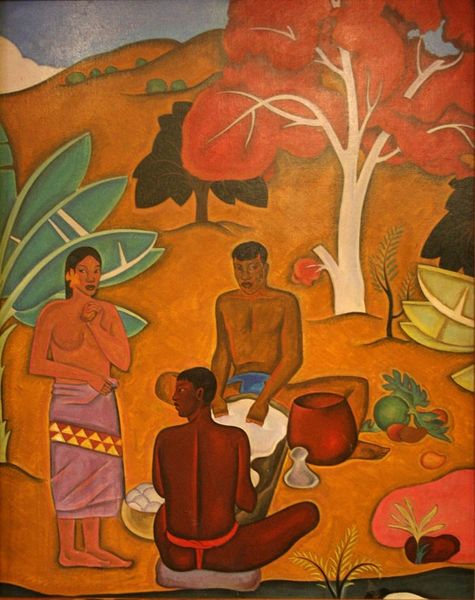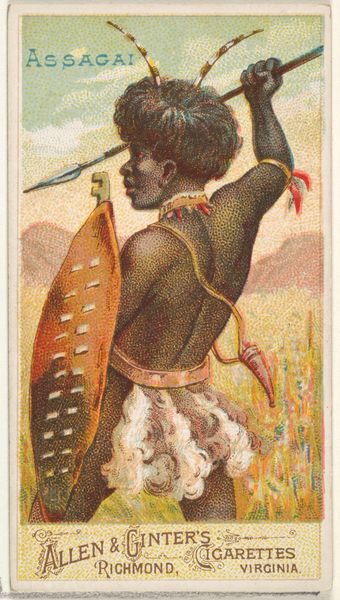
watercolor
#
portrait
#
african-art
#
narrative-art
#
indigenism
#
figuration
#
oil painting
#
watercolor
#
genre-painting
#
history-painting
#
portrait art
Copyright: George Pemba,Fair Use
Editor: We're looking at George Pemba's 1959 watercolor painting, "Paying tribute to the chief." It strikes me as quite a formal depiction. The figures are carefully arranged, and they all seem to be observing a specific ritual. How do you interpret this work? Curator: Notice how the painting freezes a moment rich with symbolism. Consider the beaded necklaces and headbands, not mere decoration but badges of status, whispering stories of heritage and social hierarchy. The spears? Instruments of protection and power. They're not just weapons; they're emblems deeply woven into the cultural identity, projecting force and legacy. The container that is being offered has very pronounced value too, a humble yet central aspect to life within these lands. What feeling is communicated from that central subject, surrounded by onlookers? Editor: So the focus isn't solely on the narrative, but also on the symbolic language embedded in the scene? It is more a focus of respect and value, not mere sustenance. Curator: Exactly. Pemba seems to be drawing from a deep well of collective memory. We're not just seeing a historical event, but a continuous thread connecting generations. What emotional resonance do you feel looking at the chief and the group offering tribute? Editor: There's a palpable sense of reverence, definitely. Almost like they are communicating the importance of legacy and power to future generations. Curator: Precisely. Think of the color choices too - muted tones. Each color resonates differently, helping to set the historical tone for an event that may be lost over time. Do you get that feeling as well? Editor: Yes, the muted colors, in a way, historicize the scene. It really highlights how symbols carry history and social narrative. Curator: Indeed. Pemba’s work highlights the potent way in which art preserves not just events, but the values and identities intertwined within them. We, as modern day viewers, still recognize it even if the cultural specificities are no longer immediately visible.
Comments
No comments
Be the first to comment and join the conversation on the ultimate creative platform.
